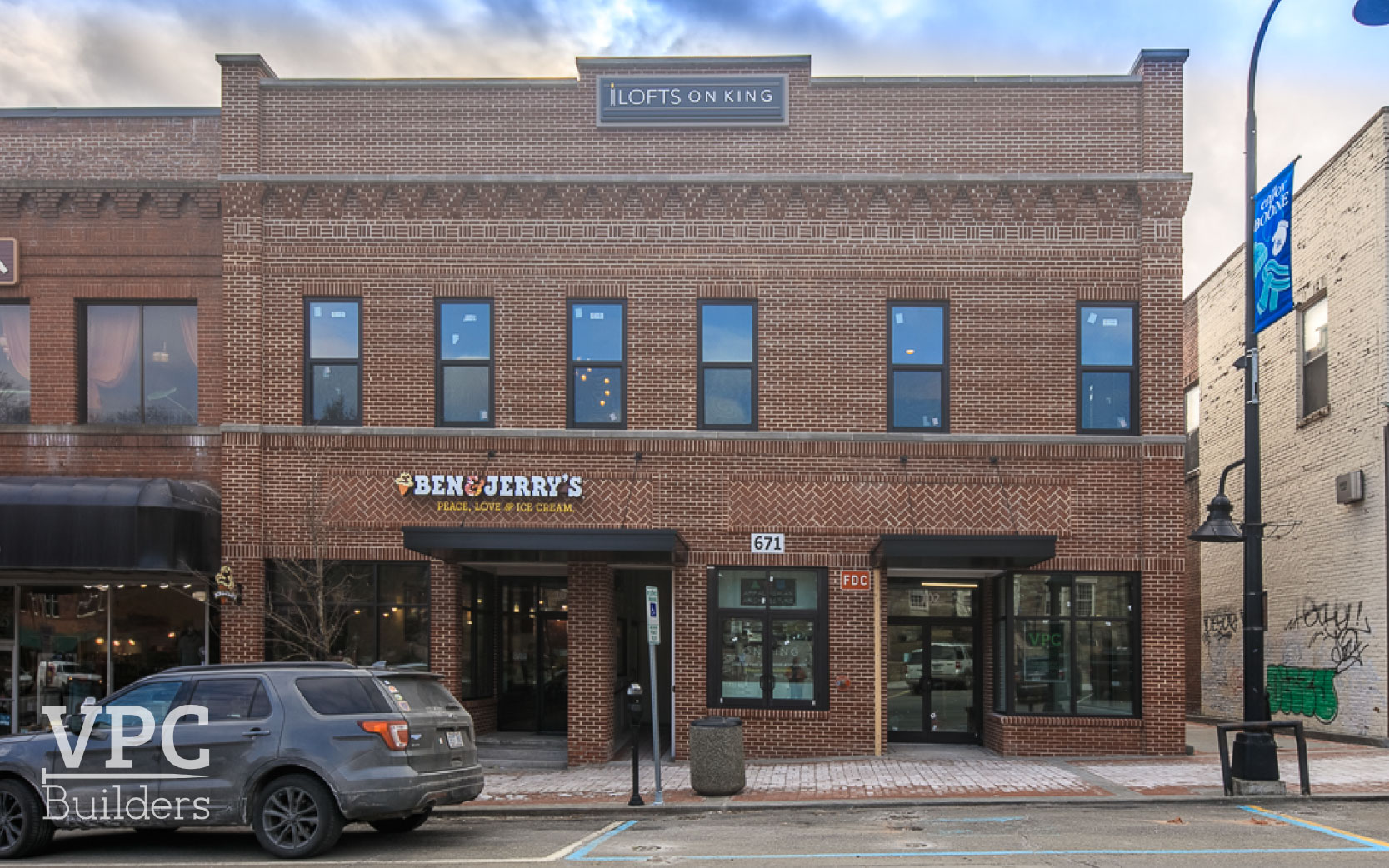Need strategic guidance for your project? Contact VPC today
For investors, developers, and property owners, value comes from today’s lease rates and future potential. In areas where space is limited and demand is high, mixed-use buildings—combining two or more uses on one site—offer more ways to earn money, fill spaces faster, and grow in value over time.
A mixed-use building combines ground-floor businesses like stores or offices with apartments, co-working spaces, or short-term rentals above. These buildings meet different needs, adjust to market changes, and bring life to neighborhoods, making mixed-use construction one of the most strategic ways to unlock lasting returns for your investment.
At VPC Builders, we’ve seen how thoughtful mixed-use construction can transform not just a property—but an entire block. So, from your local experts, here’s what you should know about mixed-use construction before your next project.
The Power of Mixed-Use Construction
Mixed-use buildings aren’t a new idea—but they are having a noticeable renaissance in modern markets. Why? Because they bring together two (or more) ways to make money on the same piece of land. This makes better use of space and lowers the chance of empty spots. Usually, it works like this:
- Street-level commercial space (shops, salons, galleries, cafés, or office suites)
- Upper-level residential (apartments, condos, or long-term rentals)
But that’s just the starting point. Some projects integrate co-working, boutique hospitality, rooftop amenities, or short-term rentals. Others offer affordable housing components that expand community support and financing options. This creates an asset with both built-in flexibility and market resilience—one that meets multiple needs and evolves alongside the neighborhood.
Zoning & Planning: The First Hurdle (and Biggest Opportunity)
Before design, zoning shapes what’s possible. Many downtown or transition areas already encourage mixed‑use as part of revitalization. In smaller towns or rural settings, approvals may require more coordination. Start early with a builder who understands the local landscape—codes, boards, and priorities.
A strong building partner will help you:
- Navigate zoning requirements and overlay districts.
- Clarify use‑by‑right vs. conditional use scenarios.
- Evaluate parking minimums, setback rules, and density bonuses.
- Coordinate with planning boards, preservation commissions, and economic‑development teams.
Market conditions matter. With higher interest rates, changes in retail, and ongoing housing needs, cities are backing projects that add homes, improve ground floors, and grow the tax base.
Depending on location and program, your team may also explore tools such as main‑street or downtown grants, façade programs, historic‑rehabilitation incentives, or tax‑increment funding.
Location as Leverage: Why Walkability Matters
Not every site is ideal for mixed‑use. The common denominator of winning locations is walkability. In walkable districts, ground‑floor tenants thrive on foot traffic, while residents enjoy easy access to daily needs. Municipalities view this as a win for livability and long‑term economic health.
Have a site in a transitioning area? Early, quality development can catalyze momentum—often with lower land basis and higher long‑term upside. The key is to match the program to the neighborhood’s present demand and future plan.
A well-designed development can actually catalyze local momentum—drawing new businesses and neighbors who value livable, connected communities.
Design With Value in Mind: Flexibility, Flow, and Finish
Designing for ROI means balancing cost management with features that command value over time. That starts with floor plan versatility, efficient systems, and tenant appeal. Here are just a few high-impact design decisions that could elevate your investment:
For Commercial Spaces:
- Storefront glass and prominent signage zones
- Separate utility meters for tenant independence
- Flexible open-plan interiors that can suit retail or office use
- ADA-accessible entries and restrooms
For Residential Units:
- Durable finishes that hold up to long-term use
- Natural light and private outdoor space wherever possible
- Sound insulation between units and floors
- In-unit laundry and smart tech integration
- Secure access control and on-site parking or bike storage
Build for the Long Haul: What Makes a Project Profitable
Short-term revenue is important, but long-term profitability depends on how well a building performs over its full lifecycle. That means thinking beyond the initial lease-up to consider ongoing maintenance costs, energy efficiency, and the flexibility to adapt as tenant needs evolve. Buildings that are expensive to operate, difficult to reconfigure, or quick to show wear will eat away at returns over time.
Short‑term lease‑up matters, but long‑term performance protects returns. Specify:
- Durable materials and proven mechanical systems that keep operating costs predictable.
- Energy‑efficient envelopes and equipment to reduce utility burden.
- Adaptable layouts—modular partitions, consistent utility rough‑ins, and stacked wet walls—to streamline future reconfigurations.
Buildings that are hard to maintain or quick to show wear will erode Net Operating Income (NOI) over time. A resilient, adaptable building supports both stable occupancy and strong resale value.
How VPC Builders Empowers Your Mixed-Use Construction
Mixed‑use construction is a coordination challenge—multiple user groups, tight sites, and careful phasing. VPC Builders brings:
- Hands‑on experience with multi‑use properties and infill development.
- Strong relationships with municipalities and code officials.
- In‑house design expertise to accelerate decisions and control scope.
- A collaborative approach that aligns investor priorities with end‑user needs.
From Asheville and Boone to Banner Elk and Charlotte, we’ve built our reputation on quality and trust. Whether you’re planning your first mixed‑use property or expanding a regional portfolio, we can help you build smarter and maximize return—without cutting corners.
Whether you’re developing your first mixed-use property or expanding a regional portfolio, we’re here to help you build smarter and maximize your return without cutting corners. Contact VPC Builders today to start your mixed-use project.

